One Reddit user described how they struggled with this while casting TV episodes via Chromecast, "I use VLC to play TV Shows from my computer to my TV via chromecast. Some of the files play, but with a black screen and audio only. These are TV episodes, I have to go back to my computer and do this every time a new episode plays. And if I'm casting from my phone, I can't do this at all. Is there any way around this?"
Does a problem like this ever happen to you? In this article, we will show five reliable ways to fix the VLC media player black screen issue. So, you can ensure seamless playback without any disruptions.
Fix VLC Black Screen Problem

In this article
Part 1: Why Does VLC Media Player Black Screen Issue Happen?
If you’re facing a black screen while using VLC Media Player, it can be frustrating. The good news is that this issue doesn’t always have to be complicated. Knowing why it happens might aid you find the perfect solution. Here are several reasons VLC might display a black screen:
- Outdated VLC Version: Running an older version of VLC can cause various playback issues, including the black screen problem. Updates often fix bugs and improve compatibility with newer video formats and operating systems. If you haven’t updated VLC recently, it might be time to check for updates and install them.
- Incorrect Video Output Settings: VLC allows you to change the way it displays video on your screen. Sometimes, the video output settings are not compatible with your graphics card or display. This can lead to a black screen while the audio plays. If you’ve changed these settings in the past, it might be worth restoring them to default.
- Hardware Acceleration Issue: Hardware acceleration helps VLC use your computer’s graphics card to improve video playback. However, this feature doesn’t always work well with all devices. If your graphics card or drivers are incompatible, it can cause VLC to show a black screen. Disabling or enabling this feature may help fix the issue.
- Corrupted Video Files: Sometimes, the video file itself is the cause of the black screen. Corrupted files might not play correctly in any player, including VLC. This can happen due to incomplete downloads, transfer errors, or damage to the storage device. If the file is corrupted, no amount of adjusting VLC settings will help. It needs repair.
Part 2: 4 Quick Fixes for the VLC Black Screen Problem
Now that we know why the VLC black screen issue happens, let’s move on to some quick fixes. These steps can help you resolve the problem without much hassle. Try each one to see if it solves the issue.
Troubleshoots 1. Update VLC Media Player
Did you know that outdated versions of VLC Media Player can cause playback problems? New updates often fix bugs and compatibility issues that lead to the black screen error. Ensuring VLC is up-to-date can resolve many playback issues. This can also give you access to improved features.
Step 1. Open VLC Media Player software.
Step 2. Navigate to Help, then hit Check for Updates.

Step 3. Download and install the update if one is available.
Step 4. Restart VLC after updating to apply changes.
Troubleshoots 2. Check Hardware Acceleration
Hardware acceleration is a feature in VLC that improves performance by using your device’s hardware for video decoding. However, if your hardware isn’t compatible or the settings are incorrect, it can cause a black screen issue. Checking this setting can help identify if it’s the cause.
Step 1. Open VLC Player and go to Tools. Select Preferences.

Step 2. Click on the Input/Codecs tab. Locate the Hardware-accelerated decoding option and try enabling or disabling it. Save the changes and restart VLC.

Troubleshoots 3. Adjust Output Settings
The video output settings in VLC control how the media is displayed on your screen. Sometimes, these settings may not be compatible with your device’s display or graphics drivers. Changing the output settings can fix mismatched configurations and help bring your video back
Step 1. Open VLC Media Player. Go to Tools, then Preferences.
Step 2. In the Interface, locate Show settings.

Step 3. Scroll down to locate Video and press Output Modules. Try selecting different output modules like Direct3D or OpenGL, and then save changes.

Step 4. Restart VLC to see if the black screen issue is resolved.
Troubleshoots 4. Reset VLC Preferences
If you’ve made multiple changes to VLC’s settings, it might lead to unexpected problems. Resetting the preferences can return VLC to its default settings. This is a simple way to fix misconfigurations that could cause the black screen issue.
Step 1. Open VLC Media Player. Click Tools and select Preferences.
Step 2. Hit Reset Preferences.

Step 3. Click OK to confirm the reset. Then, restart VLC to launch with its default settings.

Part 3: How to Fix VLC Black Screen When Quick Fixes Don’t Work?
What if the black screen issue persists after trying all the quick fixes? In many cases, this could indicate that the video file itself is corrupted. Corruption can occur due to interrupted downloads, transfer errors, or storage problems.
When this happens, repairing the video file is essential. That’s when Repairit Video Repair becomes the solution.
Repairit Video Repair is a powerful and user-friendly tool designed to fix corrupted video files. It works for all major video formats, including MP4, AVI, and MOV. Whether the file is mildly or severely corrupted, Repairit can restore it so you can play it again without issues.
Key Features of Repairit Video Repair:
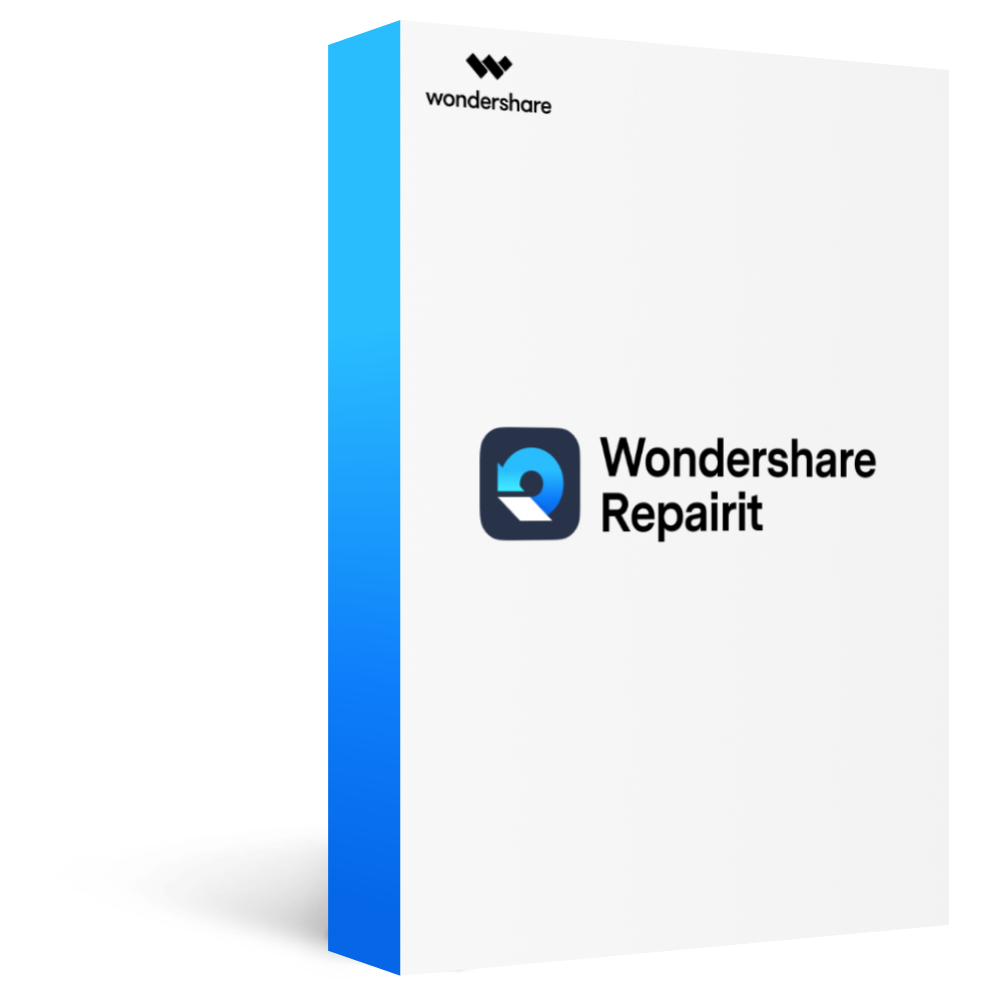
-
Wide Format Support. Repairit is versatile and dependable, as it works with a broad range of video formats. Whether your file is in MP4, AVI, MOV, or other common formats, this tool can handle it. It’s especially useful if you work with different types of video files and need a single tool to repair them all.
-
Handles Severe Corruption. Some tools only fix minor issues, but Repairit can handle severe corruption. It repairs files with broken headers, missing frames, or damaged data. Even if a file refuses to open or play in any media player, Repairit can often restore it to working condition.
-
Preview Before Saving. Repairit allows you to preview repaired videos before saving them. This ensures you can check the quality and confirm that the repair worked. You don’t need to waste time saving a file only to discover it’s still broken.
-
Batch Repair. This is a big time-saver if you have several corrupted files. You won’t need to repair each file individually, making the process faster and more efficient.
-
User-Friendly Interface. Repairit’s interface is designed to be simple and straightforward. Even if you’re not familiar with technical tools, you can easily navigate through the steps. The instructions are clear, so you don’t have to worry about making mistakes during the repair process.
Here are the steps how to fix the issue using Repairit Video Repair:
Step 1. Download Repairit from the official Repairit website. Open it on your PC and click +Add. Browse and select the corrupted video file from your device.
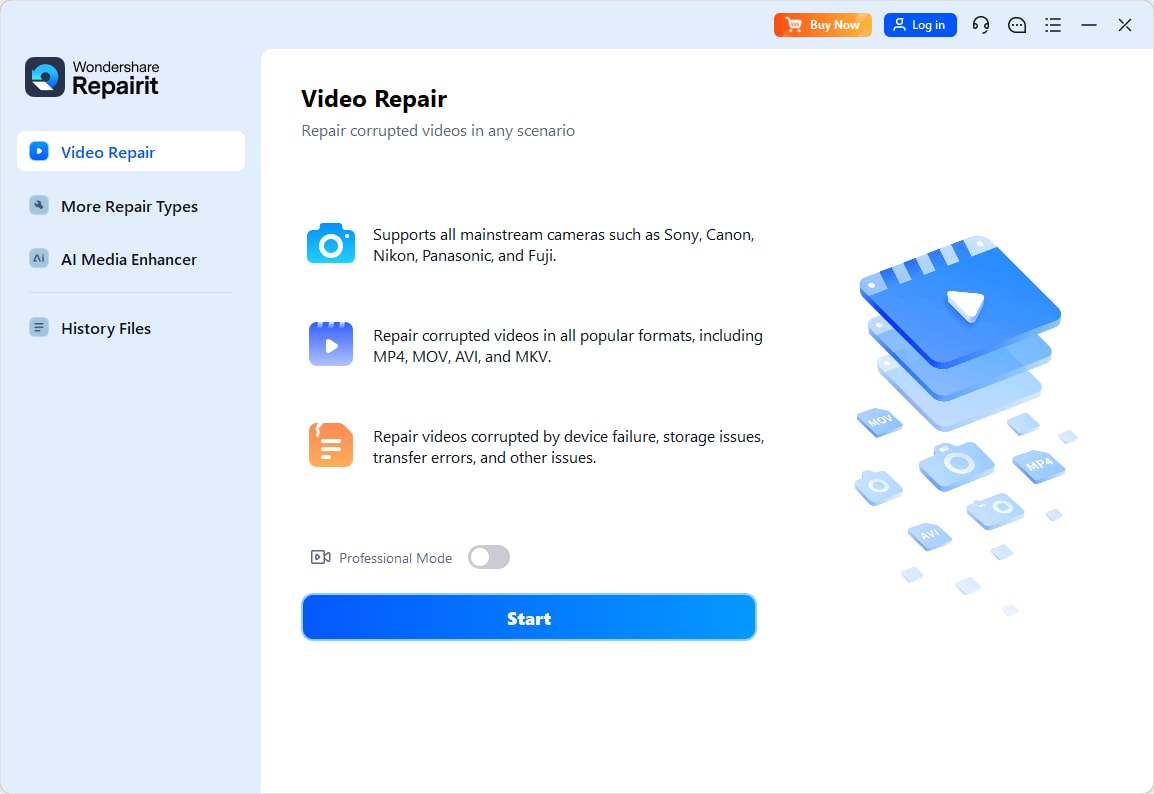
Step 2. Hit the Repair button to begin.
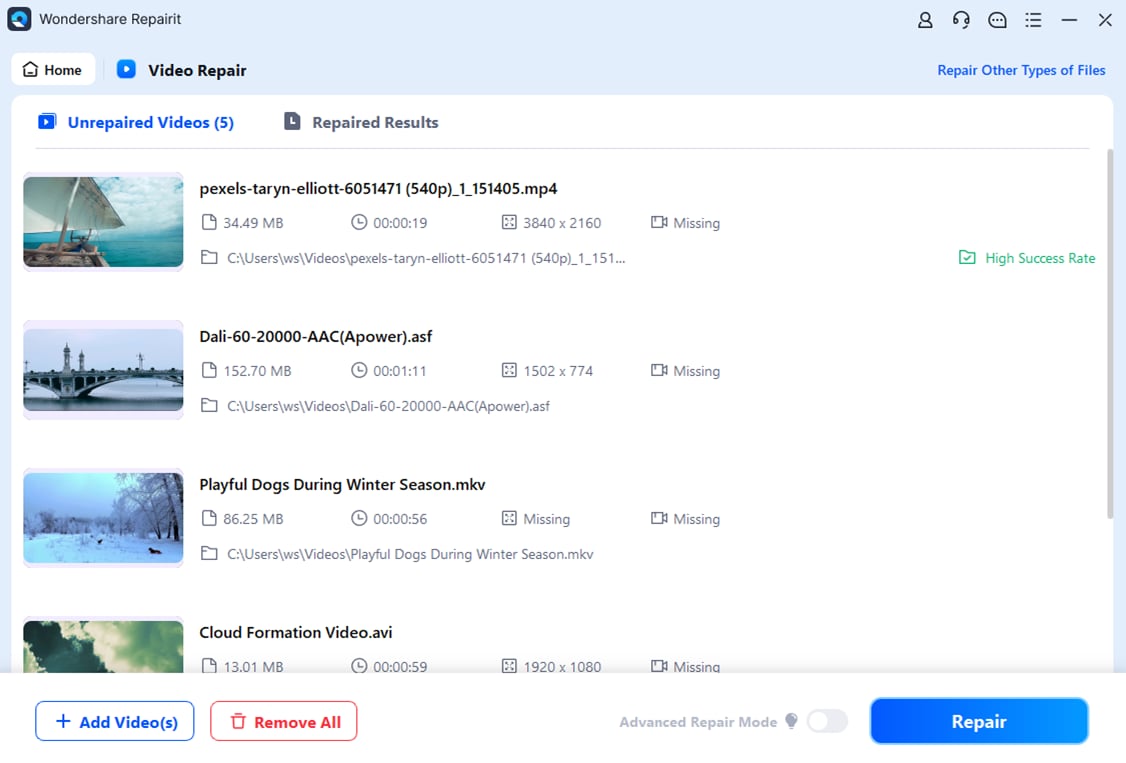
Step 3. Once the repair is done, click Preview to check if the video plays correctly. If satisfied, click Save to store the repaired file on your device.
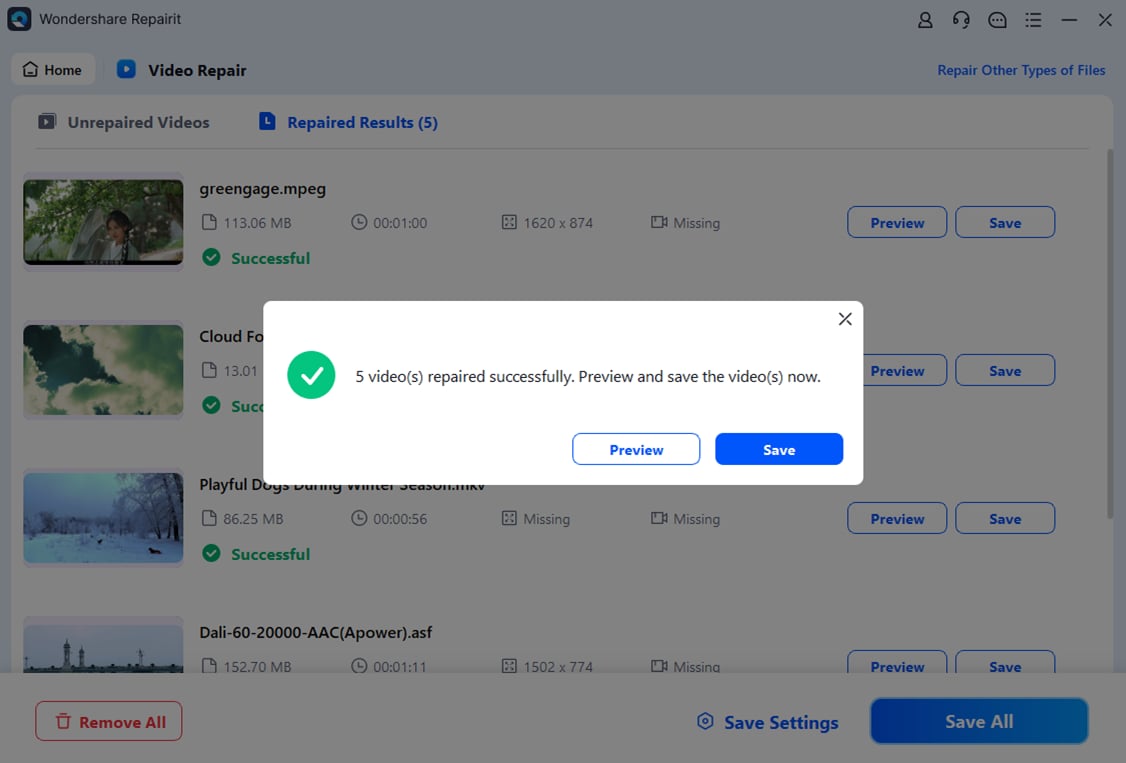
Step 4. If the basic repair doesn’t work, use the Advanced Repair option. Upload a working file from the same device and format as a reference to improve the repair process.
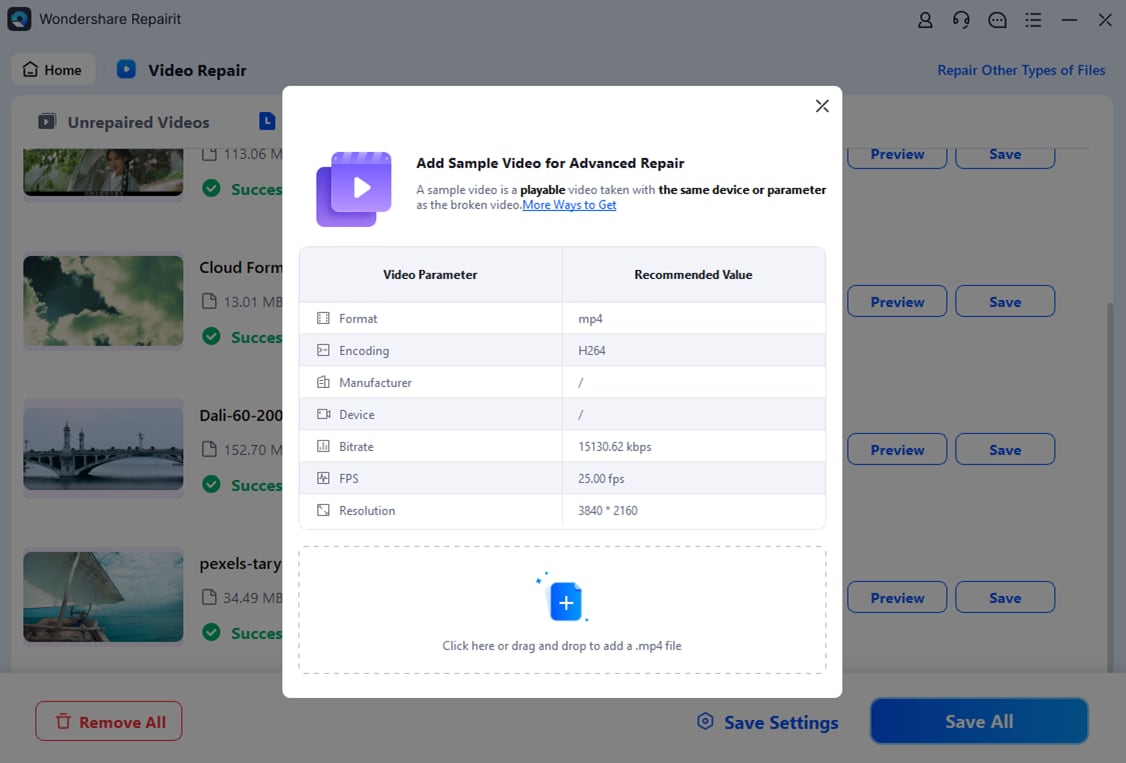
Using Repairit to Fix VLC Black Screen Issues

Conclusion
The VLC black screen issue doesn’t have to ruin your viewing experience. By understanding why it happens, you can troubleshoot the problem effectively. Quick fixes like updating VLC or adjusting settings often resolve it. However, when the problem is due to video file corruption, tools like Repairit Video Repair provide a reliable solution.
With these tips and the right tools, you can enjoy smooth video playback again. Don’t let a black screen stop you from enjoying your favorite content!
FAQ
Why do some videos work in VLC while others don’t?
This issue can occur for several reasons. Some videos might use codecs or formats that VLC doesn’t fully support. Additionally, if a video file is incomplete or damaged during download, it might not play properly.Can I fix the VLC black screen issue on my phone?
Yes, you can troubleshoot this issue on your phone. First, ensure your VLC app is updated to the latest version. You can also try changing the video output settings in the app, such as switching to Software decoding.If the problem is with the video file itself, tools like Repairit are helpful. They work well on desktop and mobile platforms, allowing you to repair corrupted files and transfer them back to your phone.
How often should I update VLC Media Player?
Checking for updates at least monthly is a smart practice. VLC releases updates regularly to fix bugs, improve performance, and support new video formats. Updating ensures compatibility with newer operating systems and prevents playback issues.


 ChatGPT
ChatGPT
 Perplexity
Perplexity
 Google AI Mode
Google AI Mode
 Grok
Grok

